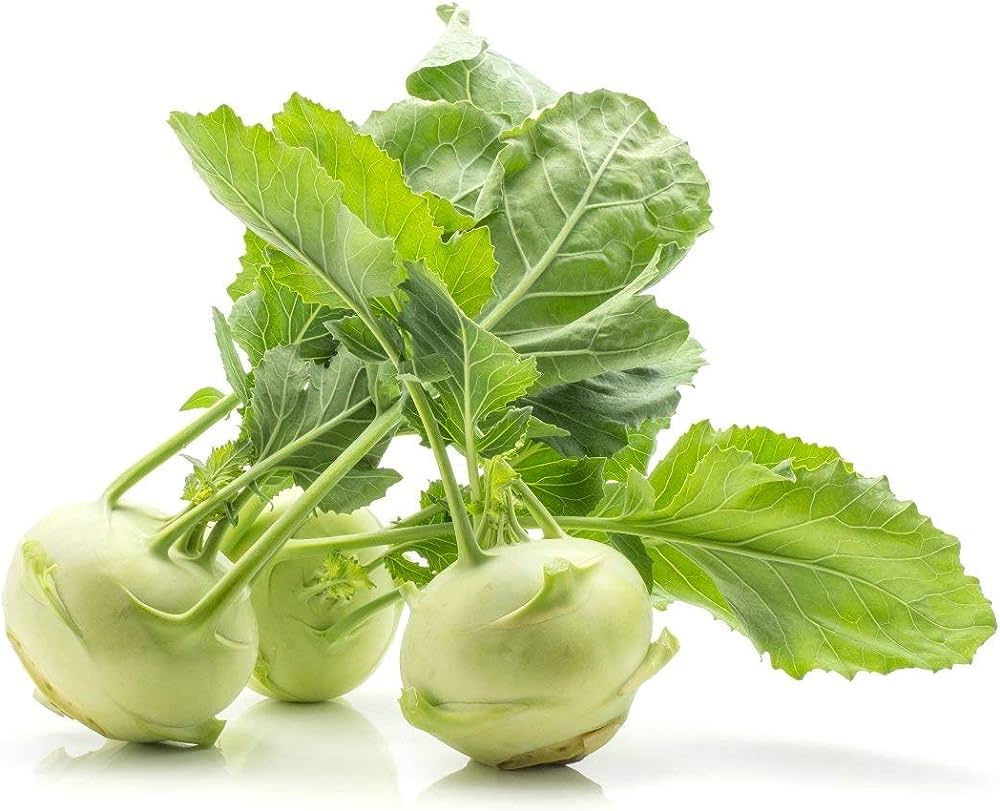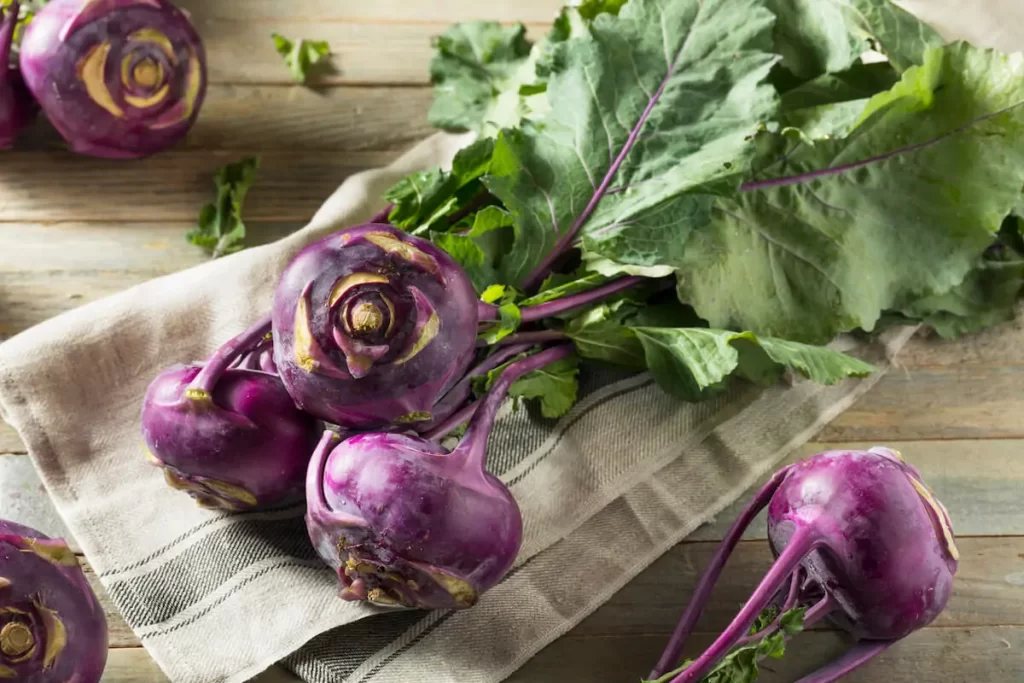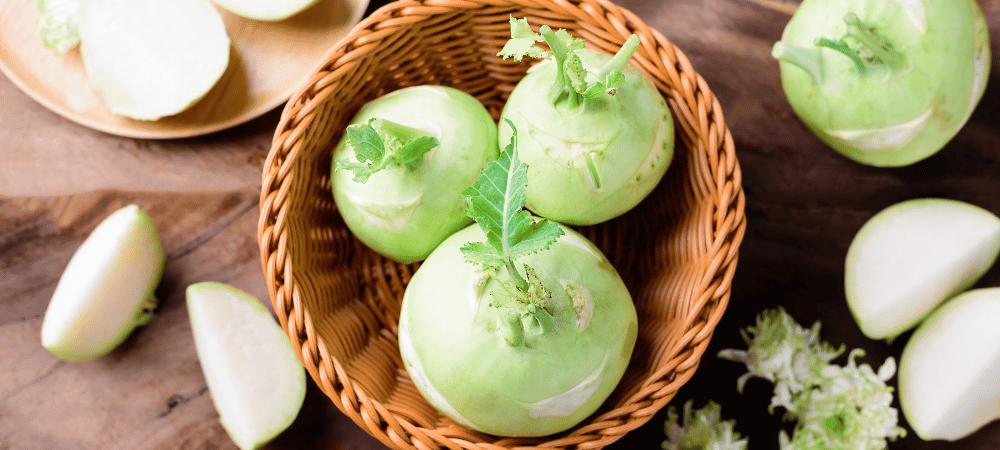Kohlrabi
is a vegetable that belongs to the cabbage family. It has a bulbous shape and a mild, slightly sweet flavor. Here’s the information you requested:
Kohlrabi meaning in Urdu:
Kohlrabi is known as “Ganth Gobhi” in Urdu.
Kohlrabi substitute: If you’re looking for a substitute for kohlrabi, you can try using turnips or jicama, as they have a similar crunchy texture and mild taste.
Kohlrabi benefits:
Kohlrabi is a nutritious vegetable that offers several health benefits. It is low in calories, high in fiber, and a good source of vitamin C, potassium, and antioxidants. Some of its benefits include supporting digestion, promoting healthy skin, boosting the immune system, and providing anti-inflammatory properties.
Kohlrabi medicinal uses:
Kohlrabi is not widely used for medicinal purposes, but it is rich in nutrients that can contribute to overall health and well-being.
Kohlrabi benefits for skin:
Kohlrabi contains vitamin C and antioxidants, which can help promote healthy skin by reducing oxidative stress and supporting collagen production.
Is kohlrabi good for kidney disease?
Kohlrabi is generally considered a healthy vegetable for individuals with kidney disease. However, if you have specific dietary restrictions or concerns related to kidney function, it’s best to consult a healthcare professional or a registered dietitian for personalized advice.
Is kohlrabi high in potassium?
Kohlrabi is a moderate source of potassium. While it can contribute to your potassium intake, it is not excessively high compared to some other foods.
Kohlrabi disadvantages:
Kohlrabi is generally well-tolerated by most individuals. However, some people may experience digestive discomfort or gas when consuming kohlrabi, particularly when eaten in large amounts or if they have a sensitivity to certain types of fiber.

Kohlrabi calories (whole):
The number of calories in a whole kohlrabi bulb can vary depending on its size, but on average, a medium-sized kohlrabi bulb (approximately 150 grams) contains around 60-70 calories.
Kohlrabi nutrition data:
Kohlrabi is a good source of dietary fiber, vitamin C, potassium, and various other vitamins and minerals. It is low in fat and calories.
Kohlrabi salad:
Kohlrabi can be used in salads either raw or lightly cooked. You can slice or julienne the kohlrabi bulb and combine it with other vegetables, greens, and your choice of dressings to create a refreshing and crunchy salad.
Kohlrabi advantages:
Kohlrabi has several advantages, including its versatility in cooking, mild and sweet flavor, and nutrient-rich profile. It can be enjoyed raw, steamed, roasted, or added to various dishes.
Kohlrabi leaves benefits:
Kohlrabi leaves, also known as kohlrabi greens, are edible and can be used in cooking. They are rich in vitamins A, C, and K, as well as antioxidants and minerals. They can be used in salads, sautéed, or added to soups and stews.
Kohlrabi benefits for diabetes:
Kohlrabi is relatively low in carbohydrates and has a moderate glycemic index, making it a suitable option for individuals with diabetes when consumed in moderation as part of a balanced meal plan. However, it’s important to consider individual dietary needs and consult a healthcare professional or a registered dietitian for personalized advice.
Kohlrabi recipes:
There are numerous recipes that feature kohlrabi, such as kohlrabi slaw, kohlrabi gratin, roasted kohlrabi, kohlrabi fritters, and kohlrabi soup. It can be used in stir-fries, salads, side dishes, and more.
Kohlrabi purple:
Kohlrabi can come in different varieties, including purple kohlrabi. The purple color is due to anthocyanins, which are antioxidants. Purple kohlrabi has a similar taste and texture to green kohlrabi, but some people find it slightly sweeter.
I hope you find this information helpful!


